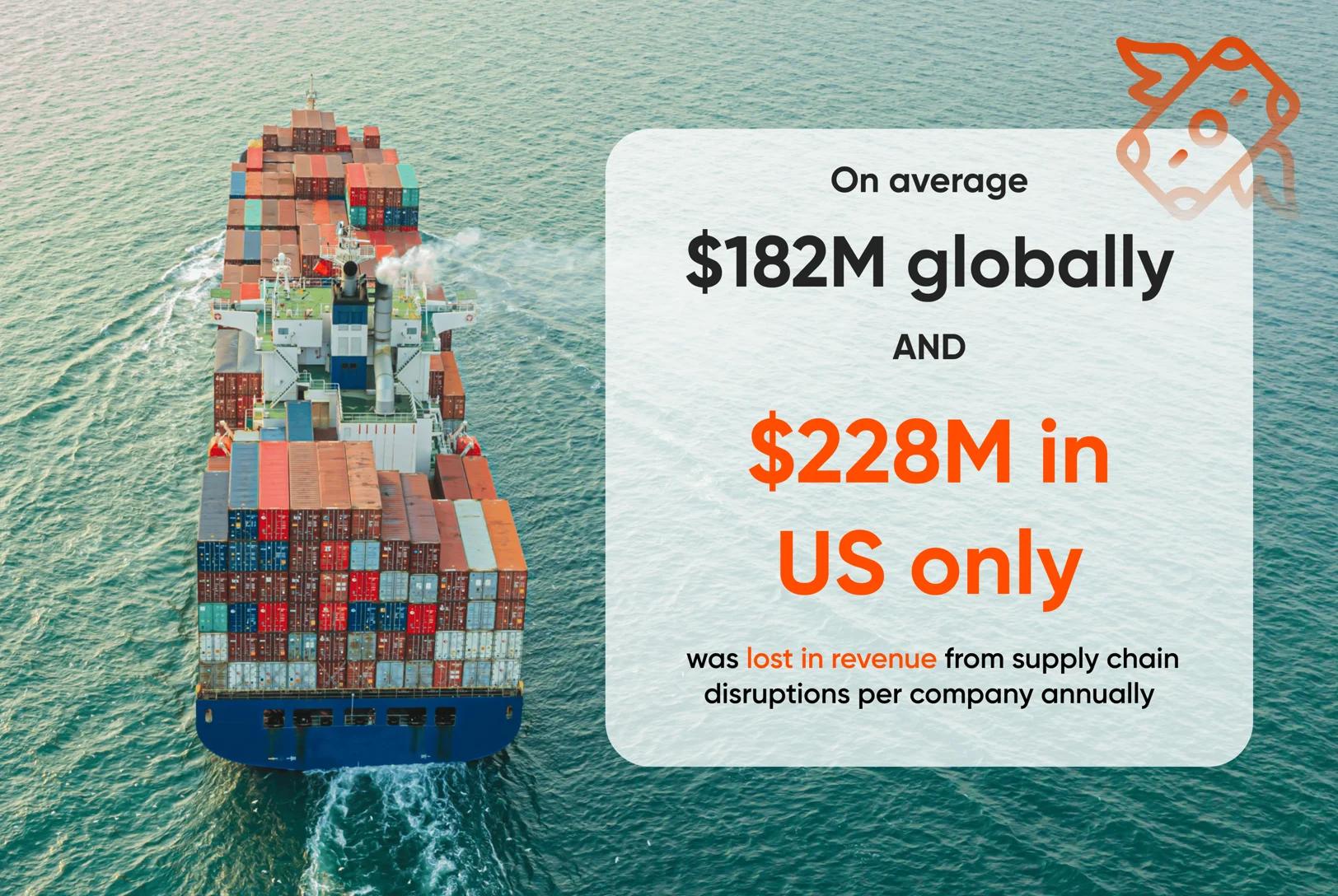Web3 Education
Part II: Why Global Supply Chains of Today Might Fail the Stress-Test?
07/28/2023 · 4 min read
… and how they already did
 Photo by Multipedia on EnvatoElements
Photo by Multipedia on EnvatoElementsPicking up from where we last left off, in this part, we will be talking about other challenges experienced by business that cause inefficient supply chain management and their direct impact on organizations.
In a previous post, we wrote about lack of protection against cyber attacks, poor inventory management, and usage of manual and paper-based systems that delay supply chain operations. In this part we will consider other two challenges: inefficient demand forecasting and lack of real-time data for decision making, and as a continuation of the first part , the effects of supply chain disruptions on businesses (more exactly, losses in revenue and higher operational costs).
Inefficient Demand Forecasting
Accurate demand forecasting is the cornerstone of a well-maintained and working supply chain. However, predicting consumer behavior and market trends can be challenging, especially when relying on outdated or inaccurate data. When we say inefficient demand forecasting, we mean everything from using ineffective tools to focussing on the wrong factors. According to the gathered data:
Poor forecasting then can lead to such issues as understocking or overstocking of inventory, producing inaccurate financial plans and unrealistic KPIs. On a customer-producer level, you won’t be able to understand customers' needs and demands due to using ineffective tools, making it harder for the company to develop good marketable products.
As a result,
Lack of Real-Time Data
Timely and accurate data is essential for supply chain professionals to make informed decisions. Unfortunately, many organizations lack access to real-time data across their supply chain network, making it difficult to identify issues promptly and respond to changing conditions in the market.
This lack of real-time visibility hampers agility of organizations as well as costs a lot for damaged goods that could be preserved with timely information and proactive decision-making.
These were the reasons why supply chains don't seem to be properly working. However, what is the direct cost for organizations?
How Poor Supply Chain Management Impacts Your Business?
Revenue Losses as a result of Supply Chain Disruptions
Those supply chain challenges directly impact a company's revenue stream. Delays, stockouts, or disruptions caused by lack of proper management can result in missed sales opportunities and customer dissatisfaction, leading to a direct hit on revenue and market share.
Interos surveyed more than 1,500 global supply chain leaders for their Annual Global Supply Chain Report in 2022 and it was revealed that:

The cost of supply chain disruptions varied not only around the world but also among industries with financial services firms ($143 million in average annual losses) faring faring best, while pharmaceuticals and life sciences (reporting $226 million in losses) fared worst.
And this is not taking into account COVID-19. Ever since the pandemic starte d transportation costs have increased due to a backlog. Shortages and high fuel prices made businesses struggle to keep costs within their client’s desired ranges.
Such high numbers can only be the result of a lack of preparedness of global supply chains to unexpected events or crises. The COVID-19 pandemic has starkly highlighted this issue, as businesses that lacked robust supply chain contingencies struggled to adapt to the rapidly changing market conditions.
Rising Operational Costs
Aside from companies’ revenue stream, poor supply chain management can also cause huge financial blow through increased operational costs. Excess inventory, longer lead times, increased labor requirements for manual processes, and supply disruptions — all of these demand businesses to overcompensate for poor handling. During COVID-19 pandemic and since then, most companies were forced to reduce their operations.
As a result, due to supply shortages and delays, and the increasing demand, operational costs related to transportation, supply and warehousing increased dramatically. For instance, shipping costs for containers continued to rise, even after tripling from rates in mid-2020.
Compared to pre-quarantine time,
And in the first quarter of 2021,
It’s evident how rising costs can eat into profit margins and make businesses less competitive and viable. COVID-19 became a lesson for companies, but it was never a reason for these losses. What was the reason is, however, how much people let themselves stagnate and as a result, they were caught unprepared when the first serious disaster struck.
 Photo by seventyfourimages on EnvatoElements
Photo by seventyfourimages on EnvatoElementsConclusion
The lack of protection against cyberattacks, inefficient inventory management, reliance on manual processes, poor demand forecasting, and the absence of real-time data collectively contribute to revenue losses, rising costs, and vulnerability to external shocks such as the COVID-19 pandemic.
To address these challenges, companies need to start investing soon in developing more efficient and better-suited tools that could kill two birds with one stone.
Stay tuned for our next parts to know more about what kind of factors also affect global supply chains and businesses and what kind of solutions can be implemented to not only reduce costs to zero but also make a huge profit out of it!
Reference list:
Howland, D. (2018, June 22). Out-of-stocks could be costing retailers $1T. Retail Dive. https://www.retaildive.com/news/out-of-stocks-could-be-costing-retailers-1t/526327/
Is Real-Time supply chain tracking of shipments possible? | Tive Team. https://www.tive.com/blog/is-real-time-supply-chain-tracking-of-shipments-possible
Reflex Planning Solutions. (2022, March 21). Why Failing To Forecast Demand Accurately Is Bad For Business - Blog. Reflex Planning | Business Planning Solutions to Improve Efficiency and Accuracy. https://forecastingsoftware.co.uk/importance-of-accurate-demand-forecasting/
Smith, P. (2022, September 9). The Cost of Supply Chain Disruptions: 20+ Statistics | Conexiom. Conexiom. https://conexiom.com/blog/the-cost-of-supply-chain-disruptions-20-statistics/